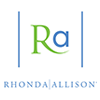Can Cleansing Make or Break a Skin Care Regimen? OH YES!

Cleansing may seem like a rather rudimentary step in skin care, but it is in fact the most important. Proper cleansing sets the tone for any skin care regimen. Skimping on this process can cause build-up in the pores, which means even the most powerful serums, gels and moisturizers will be rendered ineffective.
Most people under-cleanse and over-moisturize, piling ingredients on the skin. It’s important to go over proper cleansing procedures with your clients so they continue to see results from professional treatments and home care systems.
Unclean cleansing practices
A good sub-surface cleansing will reduce residue and gently wash away dead skin cells. Too often, people are not cleansing long enough. Cleanser needs to be massaged into the skin giving it a chance to work into the pores and soften residue. Similar to a dish pan with baked on debris, soaking is essential. A white cloth or gauze should always be used to wipe away residue. Splashing with water is not enough.
Essential cleansing steps every client should know about:
- Always cleanse at night; some may be able to simply rinse and tone in the morning but generally twice a day cleansing is recommended.
- Squeeze a small amount of cleanser into hands and smooth into skin.
- Cover the entire face, neck and décolleté, massaging for 1 to 2 minutes.
- Use warm water, a white cotton cloth or gauze to remove cleanser.
- Beginning with the eyes, rinse away cleanser with light pressure.
- Rinse the cloth and wipe skin again. No dirt or makeup should appear.
This completes the first and most important part of a cleansing regimen. An additional exfoliating cleanser may be needed for some skins.
Keeping it pure
Beyond the proper procedure, clients should also watch for some of the sudsing agents, like sodium lauryl sulfate – used in many consumer brands – that can irritate the skin, and strip it of natural humectants and water. The key is balance, not excess oil or dryness.
Finally, using a different type of cleanser around the eyes is important, as is choosing the right cleanser for your skin type. The Creamy Milk Cleanser for example, is ideal following aggressive procedures, where the Rosemary Herbal Wash is great for acne, photo-damaged and aged skin. For sensitive skins, the Citrus Gel Cleanser or Beta Green Tea Cleanser might be a good alternative. Of course the Pumpkin Cleanser is always a favorite as well. It works with most all skin types, has an alluring scent of pumpkin and spice, and is high in Vitamin A and beta carotene.
We also have a video that walks through the CLEANSING PROCEDURE, which can be a useful visual for clients.